Optical detection techniques for microfluidics
Author
Alessandra Dellaquila, PhD
Publication Date
January 30, 2018
Keywords
Optical Detection
off-chip imaging
on-chip imaging
analytical biochemistry
electrochemical detection

Need advice for your optical detection techniques?
Your microfluidic SME partner for Horizon Europe
We take care of microfluidic engineering, work on valorization and optimize the proposal with you
Introduction to optical detection systems for microfluidics
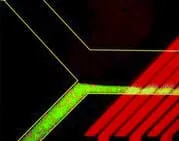
Suitable detection techniques must be coupled to microfluidic technology to analyze experiment outcomes sensitively and scalablely. The most common methods are optical detection techniques, electrochemical detection, mechanical analysis, spectroscopy methods (Raman spectroscopy, NMR spectroscopy), and mass spectrometry (MS) [1-3].
This review represents a brief overview of the imaging-based detection techniques and systems for microfluidics and a final mention of the latest and most innovative methods.
Optical detection systems for microfluidics
Several classifications of optical detection techniques can be done based on the visual method, the imaging systems, or the presence or absence of lenses [3, 4]. Briefly, detection systems can be divided into off-chip (or free space systems) [5], in which detection components (light source, mirror, and detector) are not integrated within the microfluidic device, and light propagates in air and integrated (on-chip) devices [6, 7].
Optofluidic technology originates from the integration of micro-optics and microfluidics [8]. Lensless imaging can be performed through lens-free techniques [9, 10]. Furthermore, emerging imaging techniques use nanoparticle labels and nanoengineered materials for optical detection [4].
Conventional and off-chip imaging methods
The use of bulk systems such as microscopes and interferometers is still widespread. Thus, microfluidics have been widely coupled to bright-field, phase-contrast, confocal, DIC microscopy [2, 5], and interferometers [11]. Besides optical detection, chemical imaging can be performed using ATR-FTIR spectroscopy methods [12].
Visual detection is the dominant detection technique due to instrumentation availability and the ease of coupling the systems to microfluidic platforms [13]. However, these devices are difficult to miniaturize and show reduced sensitivity due to short optical path lengths [4].
Also, because of optics rapid development, optical detection uses LEDs, lasers, and diodes as light sources, microlenses, waveguides, and optical fibers for detection and PMTs, CCDs, and CMOS as sensors [7].
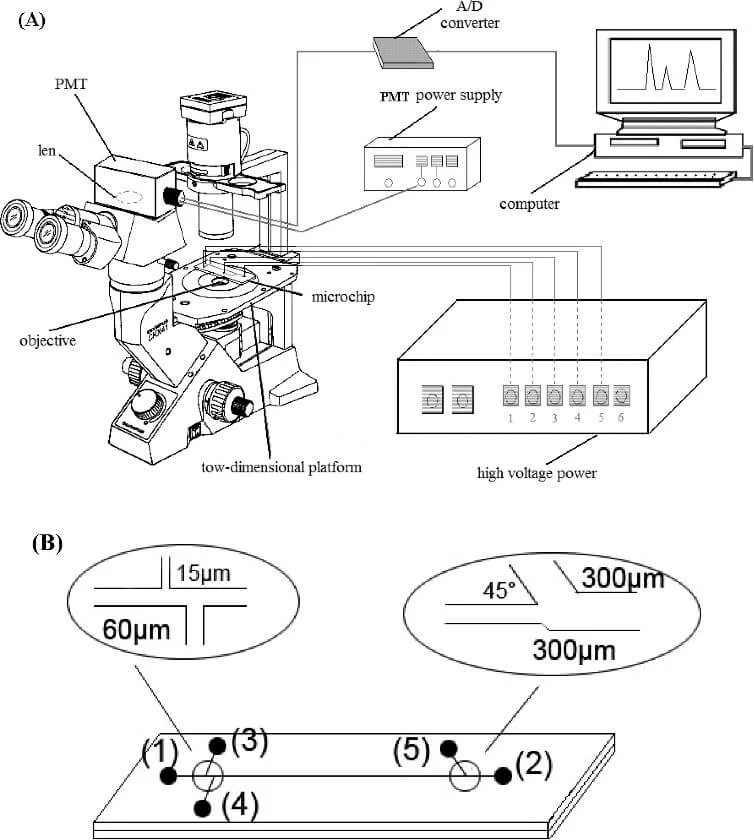
Integrated imaging methods (on-chip imaging)
In on-chip imaging systems, optical and optoelectronic components are fully integrated within the microfluidic platform [1]. The main advantages of these systems in comparison with off-chip devices are operator independence [6], increased portability, sensitivity, integration, and the ability to tune the optical properties [15]. Furthermore, on-chip imaging can be performed through lens-free techniques such as shadow imaging or digital inline holography [9, 16].
Optical detection techniques for microfluidic applications
The following table reports the most common imaging techniques. Based on the analytes, these techniques can be used for detection in analytical biochemistry (detection of proteins, cytometry, enzyme kinetics), POC diagnostics, cell biology, immunoassays, as well as in screening applications and fluids manipulation [2, 13, 17]. Their application is not limited to the healthcare field but extends to industrial and environmental areas.
Table 1. List of the most diffused optical techniques, their operating principle and characteristics [4, 6, 7].
| Technique | Principle | Properties |
| Absorbance | Measure of the attenuation of incident radiation in function of the wavelength | Simple instrumentation Low sensitivity |
| Fluorescence | Measure of emission light from a fluorophore | High sensitivity High selectivity Ease of incorporation |
| LIF and LEDIF | Excitation is caused by a laser or LED source | Focus on small volumes and low reagents amounts Single molecule detection |
| Chemi- luminescence |
Measure of energy release in a chemical reaction | High sensitivity and portability Does not require a light source Limited number of reagents Poor reproducibility |
| SPR | Measure of refractive index change of a sample in contact with a metal film | High sensitivity Complex and expensive instrumentation |
| Interferometers-based techniques | Measure of the phase shift caused by the analyte binding | High sensitivity Label-free |
| SERS | Measure of plasmonic effect of metal substrates or nanoparticles | High reliability and reproducibility High sensitivity |
Optical detection components for microfluidics
Light sources
Commercial LEDs and miniaturized diode lasers as light sources have been widely used in microfluidics setups because of their availability and low cost. In contrast, in current literature, organic LEDs (OLEDs) and dye lasers are the most commonly used optofluidic light sources because they are easily fully integrated within microfluidic systems and their versatility [13].
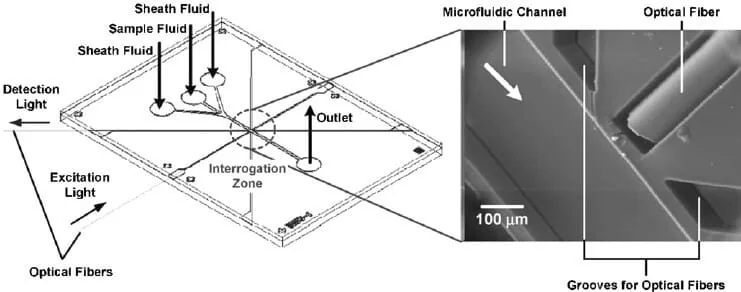
Optical components to increase detection
A standard and diffused approach uses optical fibers that can transmit and detect light, are easy to come by, and are suitable for combination with other optical components. Introducing microlenses and waveguides can improve absorbance, fluorescence, and interferometry measurements. Waveguides can be classified as transient wave-based, such as liquid-core waveguides (LCWs), or interference-based, as in the case of photonic crystal ARROWs detectors [6].
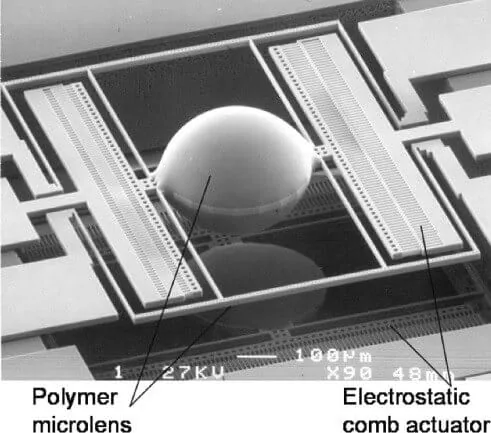
Detectors
Optical detection can be performed using a wide range of different detectors; conventional ones are PMT, and CCD sensors, where CCDs also allow multiplexing [4]. Integrated detectors are usually photodiodes (silicon or organic OPDs) and CMOS sensors that permit lens-free imaging.
New perspectives for optical detection systems in microfluidics
As the demand for cheap, automated, robust, and portable platforms for various applications increases [19], sensitive and scalable optical detectors are required. As described by Myers et al., a new class of imaging detectors can be identified in nano-engineered probes, such as quantum dots (QDs), nanoparticles, and biosensors [4].
Interestingly, the development of smartphone-based microfluidic platforms enables fast, low-cost, and straightforward analysis by using the smartphone camera as both a light source and detector [20]. Moreover, attempts have been made to develop platforms with imaging systems based on high-speed optical technology [21] and nanoscopy to go beyond conventional visual detection methods’ spatial and temporal limits.
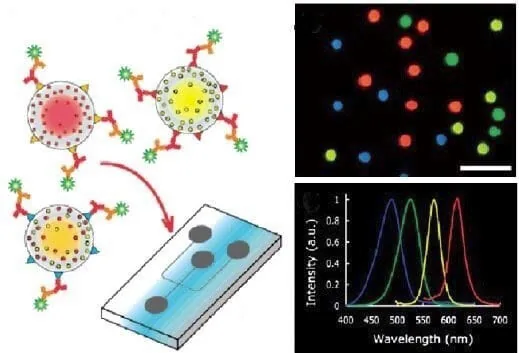
Abbreviations: ARROW, antiresonant reflecting optical waveguides; CCD, charge-coupled device, CMOS, complementary metal-oxide-semiconductor; LCW, liquid-core waveguide; LED, light-emitting diode; LEDIF, LED-induce fluorescence LIF, laser-induced fluorescence; OPD, organic photodiode; PC, photonic crystal; PMT photomultiplier tube; POC, point-of-care; SERS, surface enhanced Raman spectroscopy; SPR surface plasmon resonance.
Review done thanks to the support of the DeLIVER H2020-MSCA-ITN-2017-Action
“Innovative Training Networks” – Grant agreement number: 766181
Author: Alessandra Dellaquila, PhD
Contact:
Partnership[at]microfluidic.fr



References
- K. B. Mogensen, H. Klank, and J. P. Kutter, “Recent developments in detection for microfluidic systems,” Electrophoresis, vol. 25, no. 21–22, pp. 3498–3512, 2004.
- Y. Zhu and Q. Fang, “Analytical detection techniques for droplet microfluidics-A review,” Anal. Chim. Acta, vol. 787, pp. 24–35, 2013.
- J. Wu and M. Gu, “Microfluidic sensing: state of the art fabrication and detection techniques,” J. Biomed. Opt., vol. 16, no. 8, p. 80901, 2011.
- F. B. Myers and L. P. Lee, “Innovations in optical microfluidic technologies for point-of-care diagnostics,” Lab Chip, vol. 8, no. 12, p. 2015, 2008.
- J. Wu, G. Zheng, and L. M. Lee, “Optical imaging techniques in microfluidics and their applications,” Lab Chip, vol. 12, no. 19, p. 3566, 2012.
- H. Gai, Y. Li, and E. S. Yeung, “Optical detection systems on microfluidic chips,” in Microfluidics, Springer, 2011, pp. 171–201.
- B. Kuswandi, Nuriman, J. Huskens, and W. Verboom, “Optical sensing systems for microfluidic devices: A review,” Anal. Chim. Acta, vol. 601, no. 2, pp. 141–155, 2007.
- X. Fan and I. M. White, “Optofluidic microsystems for chemical and biological analysis,” Nat. Photonics, vol. 5, no. 10, pp. 591–597, 2011.
- Z. Gorocs and A. Ozcan, “On-chip biomedical imaging,” IEEE Rev. Biomed. Eng., vol. 6, pp. 29–46, 2013.
- S. J. Moon, H. O. Keles, Y. G. Kim, D. Kuritzkes, and U. Demirci, “Lensless imaging for point-of-care testing,” Proc. 31st Annu. Int. Conf. IEEE Eng. Med. Biol. Soc. Eng. Futur. Biomed. EMBC 2009, vol. 24, pp. 6376–6379, 2009.
- Y.-C. Ahn, W. Jung, and Z. Chen, “Optical sectioning for microfluidics: secondary flow and mixing in a meandering microchannel,” Lab Chip, vol. 8, no. 1, pp. 125–133, 2008.
- K. L. A. Chan, S. Gulati, J. B. Edel, A. J. de Mello, and S. G. Kazarian, “Chemical imaging of microfluidic flows using ATR-FTIR spectroscopy,” Lab Chip, vol. 9, no. 20, p. 2909, 2009.
- H. Yang and M. A. M. Gijs, “Micro-optics for microfluidic analytical applications,” Chem. Soc. Rev., vol. 47, pp. 1391–1458, 2018.
- S. Zhao, X. Li, and Y.-M. Liu, “Integrated Microfluidic System with Chemiluminescence Detection for Single Cell Analysis after Intracellular Labeling,” Anal. Chem., vol. 81, no. 10, pp. 3873–3878, 2009.
- D. Psaltis, S. R. Quake, and C. Yang, “Developing optofluidic technology through the fusion of microfluidics and optics,” Nature, vol. 442, no. 7101, p. 381, 2006.
- M. Roy, G. Jin, D. Seo, M. H. Nam, and S. Seo, “A simple and low-cost device performing blood cell counting based on lens-free shadow imaging technique,” Sensors Actuators, B Chem., vol. 201, pp. 321–328, 2014.
- N. M. M. Pires, T. Dong, U. Hanke, and N. Hoivik, “Recent developments in optical detection technologies in lab-on-a-chip devices for biosensing applications,” Sensors (Switzerland), vol. 14, no. 8, pp. 15458–15479, 2014.
- S. Kwon and L. P. Lee, “Micromachined transmissive scanning confocal microscope,” Opt. Lett., vol. 29, no. 7, pp. 706–708, 2004.
- P. Abgrall and A. M. Gué, “Lab-on-chip technologies: Making a microfluidic network and coupling it into a complete microsystem – A review,” J. Micromechanics Microengineering, vol. 17, no. 5, 2007.
- S. C. Kim, U. M. Jalal, S. B. Im, S. Ko, and J. S. Shim, “A smartphone-based optical platform for colorimetric analysis of microfluidic device,” Sensors Actuators, B Chem., vol. 239, pp. 52–59, 2017.
- K. Goda et al., “High-throughput single-microparticle imaging flow analyzer,” Proc. Natl. Acad. Sci., vol. 109, no. 29, pp. 11630–11635, 2012.

